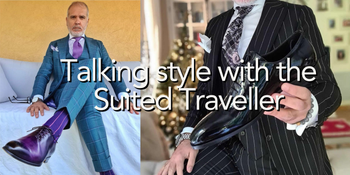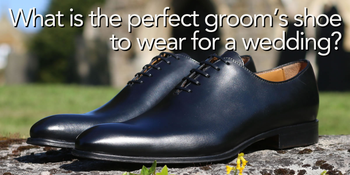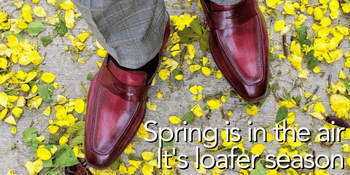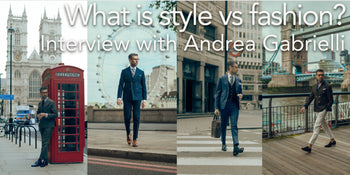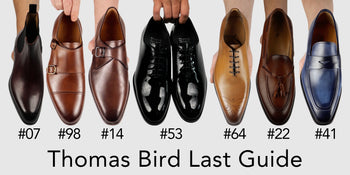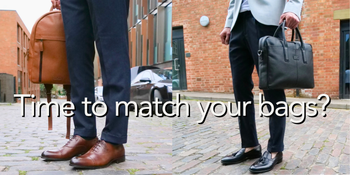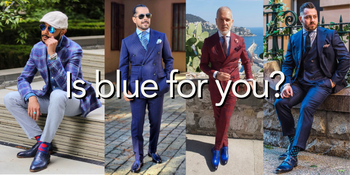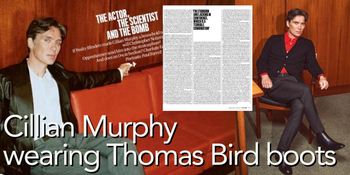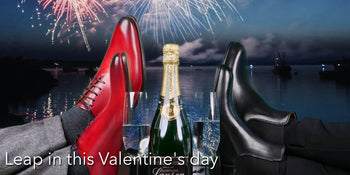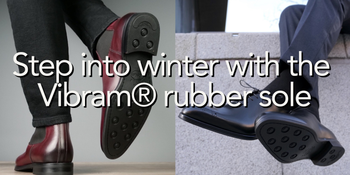So what exactly is 'Business Casual'?
Are their any rules for business casual?
What exactly is business casual? Is there a definition or set of guiding rules? We explore different looks to try and find the answers.
Customers sometimes ask our advice about if certain styles would be suitable for certain situations. For example the dress code at a new job might be 'business casual'.
So it got us thinking, 'what exactly is business casual? Is there a definition or set of rules?'.
These are our thoughts after discussion in the office and talking to some stylish people we know.
What's your business?
One clue of course is in the first word, 'business', but it depends on what business you're in. And also if you are working in a customer facing role.
You may be selling million dollar farming machinery, pitching a blue sky marketing strategy or advising the super-rich on their stock or tax shelter options.
Customer's perceptions and expectations vary widely and that will affect the company and how it wants to be represented.

'Is this business or casual?' - photo Austin Distel
In the beginning - dress down Fridays?
Back in the 60s some forward thinking companies started to introduce 'Dress Down Fridays' or 'Casual Fridays'. Employers would relax the dress the code prior to the weekend so the staff could dress a little more casually. Again, depending on the specific company, this might have meant polo shirt, slacks and loafers in one company and jeans, t-shirt and sandals in another.
Pandemic and working from home
Major changes in work habits became the norm in the pandemic. Even if you had worn a dark suit and sober tie to work before, it became ok to dress more casually at home, even when you were going to be on a zoom call. No-one could see your shorts and sandals.

Photo: Chris Montgomery/unsplash
Relaxed working is smart working?
Many bosses realised that some productivity had actually gone up as staff worked at home without distractions in a relaxed and flexible environment.
Back to the office
Over time offices re-opened and some of the old rules returned. But not everyone, even the bosses, wanted to return to wool suits, black oxfords, stiff white shirt and plain tie. So Business Casual was a nice way to get back to the office but regain some of the more informal, relaxed but efficient feel. It was time for more colour, comfort and personal style.
Individuality
Clothes can allow the wearer to express their individuality through their choices of garments, fabric, colour, cut and so on. But what works in a traditional corporate structure like a bank, when you are meeting customers, may be very different if you are pitching a marketing campaign to a Generation X start-up.
In the first case, you may need to temper your individuality and represent the whole company, while in the second you may be demonstrating creativity, individuality and flair.
Business Casual vs Business Formal
What is the difference between Business Casual and previous norm - now redefined by some as Business Formal?
Let's start with Business Formal. This generally means a dark suit, white button shirt, tie and smart formal shoes, usually oxfords. Here is a good example as shown here by Benn aka @dailytouchofclass.

Lose the jacket and tie
The first and easiest step to go Business Casual is to remove the jacket and tie. The sunshine and sunglasses are optional but also help. Here's Benn again.

Other details that help the more relaxed/less formal look here are patterned socks, a blue rather than a white shirt, and those more daring monkstraps.
Jacket and no tie
Here's another example of Business Casual. This time from Ed aka @edruizmx wearing a contrasting colour jacket and trousers, with an open neck shirt and no tie.
Ed looks super smart, professional, businesslike but with that relaxed, casual attitude. Business Casual!

Jackets are not always mandatory, so here's another photo of Ed with classic open neck button down shirt and trousers. The relaxed look is also helped by his choice of footwear. Slip on oxblood penny loafers give a smart but relaxed feel compared to more formal oxfords.

We asked Ed his thoughts about what Business Casual means to him:
"Business casual, for me, is about showing up like you’re in charge but staying chill. It’s looking sharp without trying too hard—confident, but still relaxed. Whether you’re sealing deals or grabbing a coffee, it’s about being yourself, polished but not too serious."
Business Casual - can I wear boots?
Yes, we think you can wear boots as long as the overall look is not too informal. We like this example from @ayoubhamoni who is wearing Chelsea boots with a maroon window pane suit, open neck shirt and no tie.

Business Casual vs Smart Casual
That doesn't mean that you can always get away with boots and a jacket of course. Although we really like this look from Benn (

Business Casual - can I wear a tie?
So far, the examples of Business Casual have not featured ties. They were removed and put in the wardrobe, destined only to be seen on rare occasions.
So is this a rule? No, we don't think so.
This photo for example of Ravi aka @dapper_rav shows him a tie, penny loafers and contrasting jacket and trousers.
If you work in a very formal work environment, but were meeting a supplier off-site for example, this could be a perfect stylish and relaxed Business Casual look.

@dapper_rav wearing Thomas Bird Hampton blue penny loafers
Here's another outfit from Ravi, this time with jacket and trousers and without a tie. So Business Casual? The jacket is lovely but maybe too individual for some work environments.
Together with white trousers/jeans we would put this more into the Smart Casual category. Perfect for attending a wedding or other similar social event when you are expressing personal style and individuality.

Business Casual - so no jeans?
Originally we thought jeans, especially blue jeans, were a no-no. But seeing this photo from @dapperandwitt made us think again.
The jeans are so well offset by the smart and classic navy jacket, plain blue shirt and tie, that we think it could work as Business Casual in certain work situations. It's a strong look.

So suits are definitely out?
Well at first we thought so, until we saw this photo from @meeeotch wearing a blue suit, black turtle neck shirt and black wingtips. So cool. No tie or plain button down shirt. We think in many situations this is still Business Casual.

So what are the Business Casual Rules?
We started off with the idea that Business Casual meant a jacket and smart trousers, open neck button shirt, no tie and a pair of loafers. And that meant no to a suit, jeans and other types of shirt.
But we now realise that it depends on the business or work environment, whether there is a strict dress code, and the overall balance of the outfit.
Within reason, anything goes.
These are just our thoughts. You will make your own decision maybe helped by these examples.
Somewhere between the extremes of Business Formal and Smart Casual, there is that, hard to pin down, middle ground - Business Casual.
All the best,
Thomas Bird.
Links: Business Casual (Wiki)




